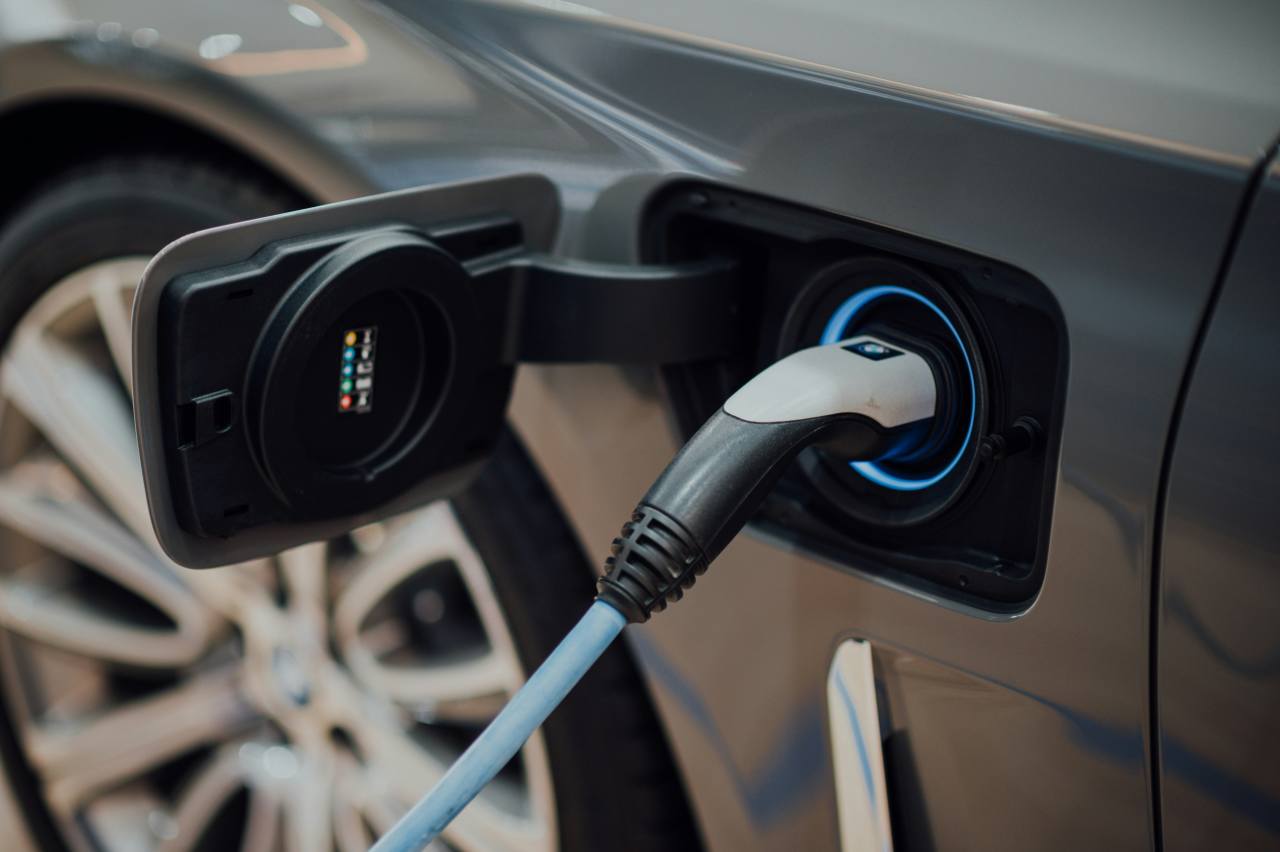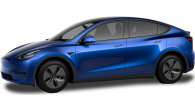Volvo is a brand with a confident identity.
Take the XC40 for example. This little SUV – which has been a massive success for the Swedish brand – has managed to exemplify its best traits.
It’s understated, luxurious, safe and family friendly, and in its journey toward being one of the segment's best-sellers, it is also one of the best examples of how to electrify a fan favourite.
The challenge which lies ahead for Volvo though, is how to maintain this momentum in the face of a rapidly changing electric car market. Can the XC40 remain as appealing and competitive as it always has in the face of a torrent of new rivals, not just from its traditional luxury opponents, but also from new China-backed players?
To that end, the car we’ve grabbed for this long-term review is the electric XC40 entry-point. It’s been recently overhauled, with a hidden switch to rear-wheel drive and some major changes which really have to be felt rather than seen.
Will this Volvo be the car for your lifestyle? Should the brand really be talking this variant in particular up? Let’s find out.
.jpg)
Which Volvo XC40 is the best?
Good question. To me it’s this one. While I love the fact the all-wheel-drive Twin version, which arrived some time ago and is one of the most ridiculous sleeper performance cars on the market, you really don’t need its overwhelming amount of power and its massive battery pack.
If you’re just looking for a friendly small luxury electric vehicle, this base Pure Electric version gets almost all the kit and plenty of driving range anyway, and at a nearly $10,000 discount, starting at $76,990 before on-roads and any state-based discounts.
.jpg)
This keeps the XC40 the great electric value in the luxury space it once was but when it arrived exclusively as the pricey all-wheel-drive version, there weren’t as many rivals in this space.
Now, it has to face off against the new BMW iX1 (from $78,900 in equivalent base form), Mercedes-Benz EQA (from $84,900), Lexus UX300e (from $80,720) and of course this car’s platform-mate, the Polestar 2 which can be had from an even more keen $67,400. Perhaps the biggest threat in the traditional luxury space comes from the new Mini Countryman, which can be had in base E Core form from just $64,990 with similar range and power outputs.
As always, EV compact SUVs like this continue to live in the shadow of the Tesla Model Y rear-wheel drive ($55,900) both in terms of sales and EV brand recognition.
.jpg)
Does the Volvo XC40 Recharge Pure Electric have enough driving range?
With its 69kWh battery pack, the XC40 Recharge Pure can travel a WLTP-certified 435km on a single charge. In the real world, your mileage may vary significantly for a few reasons.
The relatively good news here is this new rear-wheel-drive version is much more energy efficient than the AWD model I drove over a year ago.
Back then energy efficiency was perhaps less important, but now there are significantly more players in the compact EV SUV space, so scoring additional range through efficiency is now key.
.jpg)
As a result, the efficiency has been trimmed for this model down to an official 17.3kWh/100km, and for my first month, ours landed at 16.9kWh/100km.
It was actually hovering much lower than this in my suburban driving, in the low-16s, but energy consumption spiked significantly to roughly 19kWh/100km on the freeway, which made up a significant amount of our first month's driving.
This is a bigger difference than I’ve seen for other EVs with batteries in this size. Perhaps it’s aerodynamics, perhaps it’s temperature management, perhaps the motor is geared a little differently. Either way, I’ve taken on similar freeway journeys with the Mustang Mach-E and Kia EV6 and both proved more consistent over a long distance.
How fast can the XC40 Recharge Pure Electric charge?
On paper, pretty quick. The RWD XC40 is rated to suck down 150kW an hour, for an estimated DC charge time of 34 minutes on a compatible charger.
In my travels, though, I have discovered the issue is not with how fast this Volvo can charge, but with Australia’s charging network failing to keep up with the explosive growth in EV sales.
I’ve been driving EVs on an almost daily basis for the last three years and it feels as bad now trying to find a charger as it did in the early days, not because there aren’t charging locations, but because of the sheer demand for them.
This became more evident than ever on a visit to NSW’s Hunter Valley. We had no trouble getting there, as our Volvo had plenty of range, but the issue was charging up before we returned home.
.jpg)
Looking on community app Plugshare revealed two NRMA-branded DC pylons centrally located. I thought this would be sufficient, but as it turns out having just two units at such a travel hotspot is nowhere near enough.
When we showed up we were fourth in line to use the charger. It then decided to stop working while we waited. Frustrated (and needing the charge to get home) we decided to give up for the time being and try again later.
Upon returning, it seemed as though others had given up. It was a strong variety of vehicles, too, a BYD, a Polestar, and a BMW. Yet when we plugged in the charger dispensed charge freely without even requiring the app to work. Bizarre, and frankly, not good enough for infrastructure which needs to be relied upon. Do better, NRMA.
We left our XC40 on charge for an hour and came back to 94 per cent.
.jpg)
What is the XC40 Recharge Pure like to drive?
Really lovely, actually. Like all EVs it’s silky smooth and alarmingly rapid (even though the AWD variant is twice as powerful).
The steering tune is heavily electrically assisted, but somehow in a nice way unlike Tesla’s artificially heavy steering, and the strangely disconnected feel of some Hyundai and Kia EVs.
It’s not as organic as Ford’s Mustang Mach-E, but I’d argue it doesn’t need to be. It strikes a good balance of easygoing assistance while providing an accurate amount of road feel.
.jpg)
You may be shocked to hear (or maybe not, it is Volvo after all..) the brand is underselling this deep upgrade. The only difference from the outside is new wheel choices, but underneath the suspension upgrade is significant.
Gone is the stilted harshness and overbearing feeling of weight from the AWD version I drove over a year ago, welcomed instead is a more supple blend of ride qualities.
It’s much softer over larger bumps and corrugations, although in order to rein in the weight of the batteries it still has a degree of stiffness at play over sudden, sharper imperfections.
Without the lower centre of gravity, it feels a bit more precarious in corners than a Polestar 2 or Model 3, for example, but it’s also missing the crazy software at play in the Tesla Model Y which keeps it under control in the corners.
The result, and the overwhelming impression of this updated XC40, is one of balance.
Power, but not too much, ride quality, but not without a lack of control, tight handling, but without removing you from the road. I like it.
.jpg)
What is the standard equipment of the Volvo XC40 Recharge Pure?
It gets plenty of standard kit, with the only real area you can tell its a ‘base’ version being the cloth seats.
For the record, these seats are rather nice, and while I know they aren’t as good if you have kids likely to frequently spill things, I’m enjoying the cloth seat renaissance.
From the outside, I think this Volvo is ageing elegantly. The XC40 hit the market back in 2017 in internal-combustion form, but if it were released today, it would still look razor sharp.
What sets it apart from its luxury rivals is how it doesn’t even attempt to shove ‘sportiness’ in your face. Volvo is a brand happy to be graceful and understated rather than loud and shouty.
.jpg)
Inside still looks as contemporary as rivals, but I think one area where it’s showing its age is in the multimedia screen. Whilst most cars in this class are going for larger bezel-free screens, the XC40 still sticks with its smaller unit with a big gloss surround, like an older phone model, it even has a physical home button, so 2016.
To make up for it though, this car’s version of Android Automotive scores always-online connectivity, over the air updates, and a halfway decent app.
Tune in for next month’s chapter. We’ll talk a bit more about the XC40’s cabin practicality, the app, and how it fares for efficiency with more city-focused driving.
Acquired: July 2024
Distance travelled this month: 1283km
Odometer: 2602km
Average energy consumption this month: 16.9kWh/100km
Volvo XC40 2024: Recharge Pure Electric
| Engine Type | Not Applicable, 0.0L |
|---|---|
| Fuel Type | Electric |
| Fuel Efficiency | 0.0L/100km (combined) |
| Seating | 5 |
| Price From | $61,160 - $70,290 |
| Safety Rating |
|
Pricing Guides







.jpg)


.jpg)
.jpg)
.jpg)
.jpg)
.jpg)
.jpg)
.jpg)
.jpg)
.jpg)
.jpg)
.jpg)
.jpg)
.jpg)






















.png)








.jpg)
.jpg)
.png)


.jpg)
